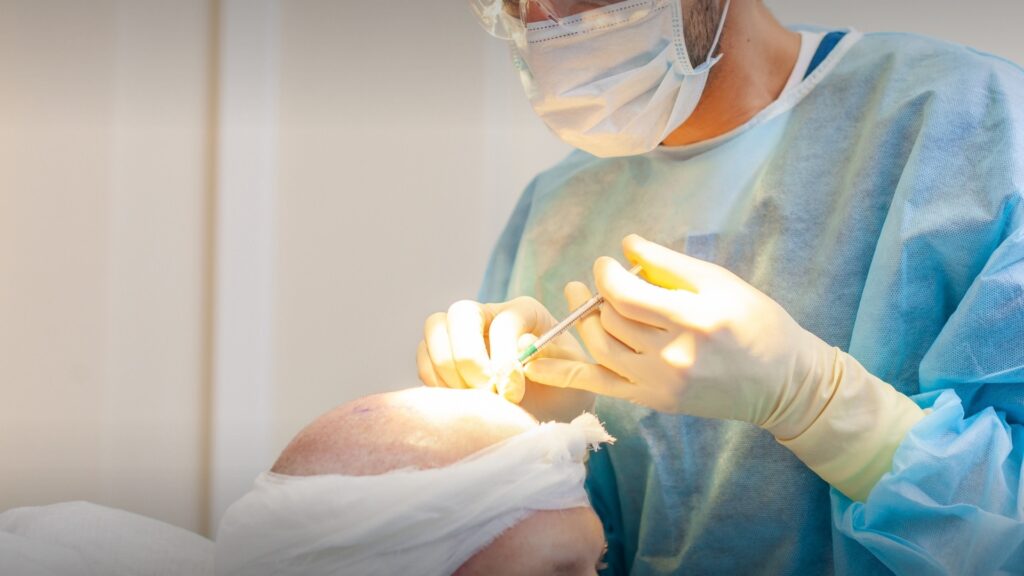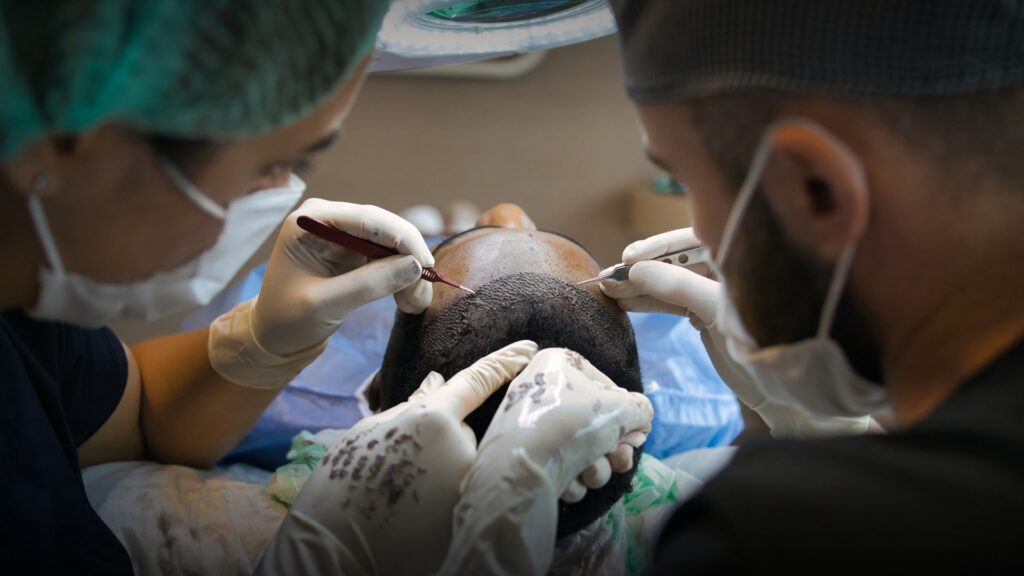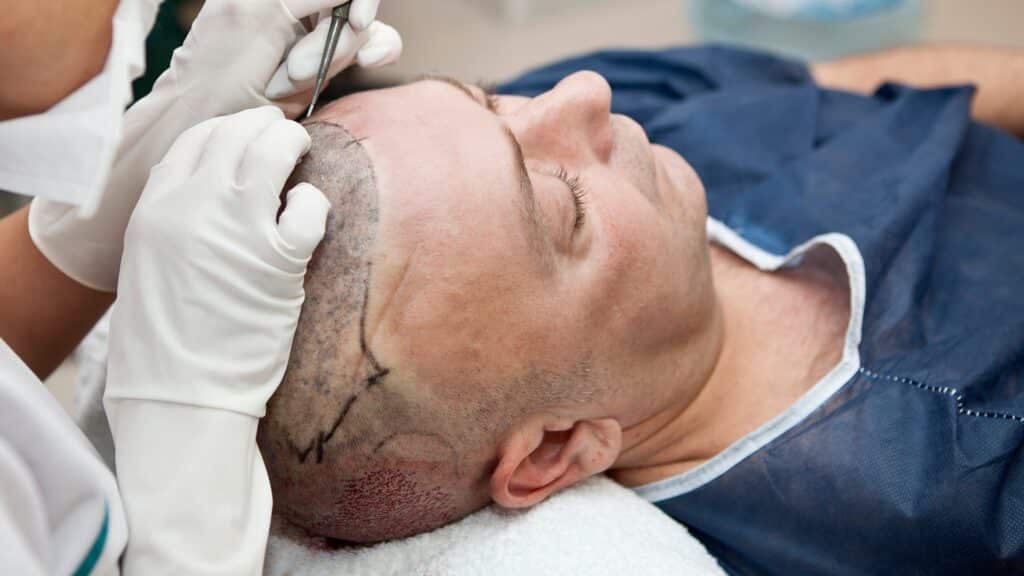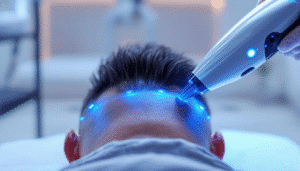
Introduction: Understanding Hair Transplant Surgery in 2025
Hair transplant surgery has become a highly sought-after procedure for addressing hair loss and restoring confidence. Thanks to advancements like the FUE (Follicular Unit Extraction) technique and the expertise of highly skilled surgeons, achieving natural-looking results has never been more accessible. This article answers the top 10 questions about hair transplant surgery, helping patients navigate their hair transplant journey with clarity and confidence.
What Is Hair Transplant Surgery, and How Does It Work?
Hair transplant surgery involves various hair transplant techniques, which transfer individual hair follicles from a donor area—typically the back or sides of the scalp—to areas experiencing hair loss, known as thinning areas. The two primary techniques used are:
Follicular Unit Extraction (FUE): A minimally invasive method where surgeons extract and implant individual follicular units for precise and natural results.
Follicular Unit Transplantation (FUT): Involves removing a strip of skin from the donor area to harvest hair follicles.
Both methods are performed under local anesthesia and are designed to provide a permanent solution to hair loss.
Am I a Good Candidate for a Hair Transplant?
A good candidate for hair transplant surgery typically has:
Sufficient donor hair available for transplantation.
Stable hair loss, meaning the pattern of hair loss is not rapidly progressing.
Realistic expectations about the outcome.
A generally healthy condition to support the healing process and hair graft survival.
The hair transplant success rate can significantly influence a patient’s decision, as it provides insight into the likelihood of achieving desired results.
Patients with severe medical conditions or unrealistic goals may not be ideal candidates and should discuss alternatives during a hair transplant consultation.
Qualifications of a Hair Transplant Surgeon

Choosing the right hair transplant surgeon is crucial for achieving successful results. A qualified hair transplant surgeon should possess a medical degree from a reputable university and specialize in dermatology or plastic surgery. Certification from recognized medical boards, such as the American Board of Dermatology or the American Board of Plastic Surgery, is essential. Additionally, membership in professional organizations like the International Society of Hair Restoration Surgery (ISHRS) or the American Academy of Dermatology (AAD) indicates a commitment to maintaining high standards in hair restoration.
Experience is another critical factor. A surgeon with a proven track record of successful hair transplants can provide the expertise needed for natural-looking results. Continuous education and training in the latest hair restoration techniques and technologies ensure that the surgeon stays updated with advancements in the field.
Moreover, a good hair transplant surgeon should understand the patient’s hair loss pattern, hair characteristics, and overall health. Effective communication and personalized care are key to addressing individual needs and achieving the best possible outcomes.
Preparing for Hair Transplant Surgery

Proper preparation is essential for a successful hair transplant surgery. Start by scheduling a consultation with a qualified hair transplant surgeon to discuss your hair loss and determine if you are a suitable candidate for the procedure. During this consultation, your surgeon will provide specific instructions tailored to your needs.
In the weeks leading up to the surgery, you may need to stop using certain medications, such as blood thinners, to reduce the risk of complications. Avoid smoking and excessive alcohol consumption for at least two weeks before the procedure, as these habits can interfere with healing. Maintaining a healthy diet and staying hydrated will also promote a smoother recovery.
Arrange for someone to drive you home after the procedure and assist with post-operative care. Following your surgeon’s pre-operative care instructions is crucial for minimizing risks and ensuring the best possible results. Lastly, have realistic expectations about the procedure and discuss any concerns or questions with your surgeon to feel fully prepared for your hair transplant journey.
How Much Does Hair Transplant Surgery Cost?

Hair transplant cost varies depending on several factors, including:
The number of hair grafts required.
The technique used (FUE hair transplant tends to be slightly more expensive than FUT).
The location of the clinic (costs in European countries or other destinations may differ).
On average, hair transplant prices can range from $4,000 to $15,000. High-quality clinics often provide hair transplant financing options, allowing patients to manage costs effectively and access advanced procedures.
Financing Options for Hair Transplant Surgery
Financing your hair transplant surgery can be a significant consideration, but there are several options available to help manage the cost. Many hair clinics offer flexible financing plans tailored to fit different budgets. These plans often come with various payment terms, interest rates, and repayment schedules, making it easier to afford the procedure over time.
Credit cards are another common method of payment. Many clinics accept major credit cards like Visa, Mastercard, and American Express, allowing you to spread the cost over several billing cycles.
Personal loans from banks or financial institutions can be a viable option. These loans can provide the necessary funds upfront, which you can then repay in manageable installments.
In some cases, insurance may cover part or all of the hair transplant surgery cost, particularly if the procedure is deemed medically necessary. It’s essential to check with your insurance provider to understand what is covered under your policy.
Before committing to any financing option, it’s crucial to thoroughly review and understand the terms and conditions. Discussing these options with your hair transplant surgeon or a clinic representative can help you determine the best course of action for your financial situation.
What Happens During a Hair Transplant Procedure?
A hair transplant operation typically follows these hair transplant surgery steps:
Consultation: The medical team assesses the patient’s hair loss pattern and determines the number of grafts required.
Preparation: The donor area is shaved, and local anesthesia is administered.
Extraction: Using the FUE technique, surgeons carefully extract individual hair follicles.
Implantation: The follicles are implanted into the recipient areas to create a natural hairline.
The entire process may take 4–8 hours, depending on the complexity of the surgery.
FUE & FUT Which is Right for Me?
When considering a hair transplant, it’s essential to understand the differences between FUE (Follicular Unit Extraction), FUT (Follicular Unit Transplantation), and DHI (Direct Hair Implantation) to choose the best method for your needs.
FUE (Follicular Unit Extraction) involves extracting individual hair follicles from the donor area using a small punch tool. This minimally invasive technique is popular for its shorter recovery time and minimal scarring. FUE is ideal for those with mild to moderate hair loss and a smaller donor area.
FUT (Follicular Unit Transplantation), on the other hand, involves removing a strip of hair-bearing skin from the donor area. This strip is then dissected into individual follicular units for transplantation.
FUT is suitable for those with more extensive hair loss and a larger donor area, as it allows for the transplantation of a higher number of grafts in a single session. However, it may result in a linear scar.
Your hair transplant surgeon will help you determine which technique is best for you based on your hair loss pattern, donor hair availability, and personal preferences.
FUE And FUT: Which is Right for Me?

When considering a hair transplant, understanding the differences between FUE, FUT, and DHI techniques is essential. Each method has its advantages and is suited to different hair loss patterns and personal preferences.
FUE (Follicular Unit Extraction) is a minimally invasive technique where individual hair follicles are extracted from the donor area and transplanted to the recipient area. This method is ideal for those with mild to moderate hair loss and a smaller donor area. FUE offers a quicker recovery time and minimal scarring.
FUT (Follicular Unit Transplantation) involves removing a strip of hair-bearing skin from the donor area and dissecting it into individual follicular units. This technique is suitable for those with more extensive hair loss and a larger donor area. While FUT may result in a linear scar, it allows for the transplantation of a larger number of grafts in a single session.
Your hair transplant surgeon can help you determine which technique is best for you based on your individual needs and goals.
What Should I Expect During Recovery?
The recovery period after a hair transplant is relatively short, especially with advanced techniques like FUE.
Healing Process: Most patients can return to work within a few days, although complete healing may take a few weeks.
Post-Operative Care: Avoid sun exposure and follow the clinic’s guidelines to accelerate recovery.
Transplanted Hair Growth: Transplanted hair begins to shed within the first few weeks, followed by new hair growth after 3–4 months. Full results are typically visible within 12 months.
A healthy diet and proper care during this period can improve overall success rates.
Aftercare Tips for Optimal Recovery
Proper aftercare is crucial for a successful hair transplant recovery and achieving the best possible results. Here are some essential tips to follow:
Follow Your Surgeon’s Instructions: Your surgeon will provide personalized aftercare instructions tailored to your specific needs. Adhering to these guidelines is vital for a smooth recovery.
Keep the Scalp Clean and Dry: Gently wash your scalp with a mild shampoo as directed by your surgeon. Avoid excessive water exposure and ensure the treated area remains clean.
Avoid Strenuous Activities: Refrain from heavy lifting, bending, or engaging in strenuous activities for at least 2-3 weeks post-surgery to prevent any strain on the transplanted area.
Use Gentle Hair Care Products: Avoid using harsh chemicals or heat styling tools for at least 2-3 weeks after the procedure. Opt for gentle, sulfate-free shampoos and conditioners.
Attend Follow-Up Appointments: Regular follow-up appointments with your surgeon are essential to monitor your progress and address any concerns promptly.
By following these aftercare tips, you can ensure a smooth and successful recovery from your hair transplant surgery, paving the way for optimal hair growth and long-lasting results.
Is Hair Transplant Surgery Painful?

One common concern about hair transplant surgery is the potential for pain. Fortunately, the procedure is typically performed under local anesthesia, which numbs the scalp and eliminates discomfort during the surgery. While some patients may experience mild discomfort or pain, it is usually manageable with medication.
After the procedure, it is normal to experience some mild swelling, redness, or discomfort in the treated areas. These symptoms are temporary and can be effectively managed with pain medication and proper post-operative care. Some patients may also experience numbness or tingling in the scalp, but this usually resolves on its own over time.
Overall, hair transplant surgery is designed to be as comfortable as possible, and any post-operative discomfort is generally mild and short-lived.
Will My Results Look Natural?

Yes, achieving a natural hairline is the hallmark of modern hair transplant surgery. Skilled surgeons design hairlines and implant grafts with precision to ensure that the transplanted hair blends seamlessly with the patient’s existing hair.
Key factors influencing natural results include:
The expertise of the surgeon and medical team.
Proper placement of individual follicular units.
Use of advanced techniques like Direct Hair Implantation (DHI).
Can Transplanted Hair Fall Out?
Yes, it is common for transplanted hair to fall out within the first few weeks after the procedure. This phenomenon, known as “shock loss,” is a normal part of the healing process. While it may be concerning, it is temporary, and new hair growth typically begins within a few months.
In some cases, transplanted hair may not grow as expected or may fall out due to factors such as poor graft quality, inadequate post-operative care, smoking, excessive alcohol consumption, or certain medical conditions or medications. However, with proper care and maintenance, transplanted hair can last for many years and provide a natural-looking and permanent solution to hair loss.
Following your surgeon’s post-operative care instructions and maintaining a healthy lifestyle are key to ensuring the longevity and success of your transplanted hair.
What Are the Risks of Hair Transplant Surgery?
While hair transplant surgery is generally safe, there are potential hair transplant risks, including:
Temporary swelling or redness in the donor and recipient areas.
Rare cases of infection if post-operative care is not followed.
Unnatural results if performed by inexperienced practitioners.
Choosing a high-quality clinic with experienced surgeons minimizes these risks and ensures a successful procedure. Additionally, most patients find that risks are minimal when they adhere to the advice provided during their consultation and follow post-surgical instructions.
How Long Do Hair Transplant Results Last?
Permanent hair restoration results are solutions for hair loss, as the transplanted hair is resistant to the effects of DHT (a hormone responsible for hair loss). However, patients must maintain a healthy diet and follow their surgeon’s advice to ensure the longevity of their results.
Factors affecting the success rate include:
The patient’s overall health condition.
Proper care during the recovery period.
The survival rate of transplanted grafts.
With the right clinic and approach, most patients experience long-lasting, natural results.
The Success Rate of Hair Transplant Surgery
The success rate of hair transplant surgery is generally high, with most patients experiencing significant hair growth and improvement in their hair loss pattern. However, the success rate can vary depending on several factors, including the technique used, the skill and experience of the surgeon, and the quality of the donor hair.
FUE (Follicular Unit Extraction) boasts a success rate of around 90-95%. This technique is favored for its minimally invasive nature and high graft survival rate, leading to substantial hair growth and natural-looking results.
FUT (Follicular Unit Transplantation) has a success rate of approximately 85-90%. While it may result in a linear scar, it allows for the transplantation of a larger number of grafts, making it suitable for those with extensive hair loss.
DHI (Direct Hair Implantation) also has a high success rate of around 90-95%. This technique’s precision and control during implantation contribute to its effectiveness in achieving significant hair growth.
It’s important to note that individual results may vary. Factors such as the patient’s overall health, adherence to post-operative care instructions, and the quality of the donor hair play a crucial role in the success of the transplant surgery. Consulting with a skilled and experienced hair transplant surgeon can help maximize the chances of a successful outcome.
How Do I Choose the Best Hair Clinic?
When selecting a clinic, consider the following:
Experienced Surgeons: Look for highly skilled surgeons with a proven track record in hair transplantation.
Patient Testimonials: Former patients’ reviews, including hair transplant clinic reviews, provide insight into the patient experience and hair transplant results.
Technology and Techniques: Ensure the clinic uses the latest advancements, such as the FUE technique and robotic assistance.
Location and Costs: Compare clinics in your area with those in other countries or European countries to determine the best value for your procedure.
What Are the Alternatives to Hair Transplant Surgery?
For patients who may not be suitable candidates for surgery, alternatives include:
Platelet-Rich Plasma (PRP): A non-surgical treatment to stimulate hair growth.
Scalp Micropigmentation (SMP): A cosmetic solution to create the illusion of a fuller head of hair.
Medications: FDA-approved drugs like Minoxidil or Finasteride that can slow hair loss progression.
Stem Cell Therapy: Stem Cells, specifically mesenchymal stem cells have the ability to differentiate into different cells/forms that allows enables the body to essentially heal itself.
While these options do not provide the same results as a transplant, they can complement a hair restoration plan and are worth considering, especially for patients in the early stages of hair loss.
Conclusion: Is Hair Transplant Surgery Right for You in 2025?

Hair transplant surgery continues to evolve, offering patients better outcomes, shorter recovery times, and natural-looking results. Whether you’re considering an FUE hair transplant or exploring other options, consulting a hair transplant surgeon is the first step to reclaiming your confidence. With advancements in technology and techniques, 2025 is the perfect year to embark on your hair transplant journey. Book a consultation with one of Los Angeles’s high-quality clinics today to learn how you can achieve your hair restoration goals.

